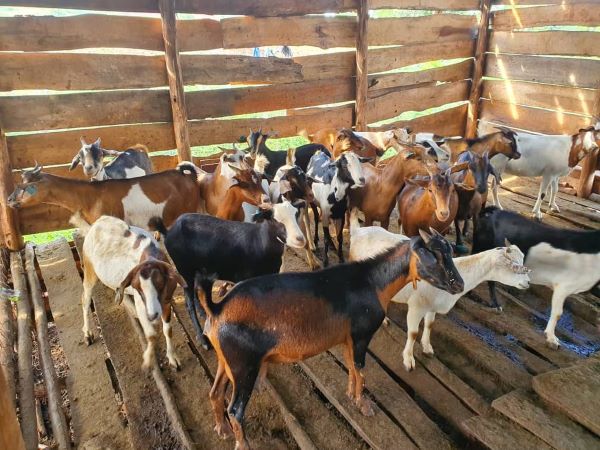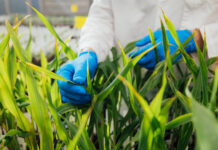Smallholder goat farmers from Uganda are set to benefit from an initiative by the country’s scientists aimed at improving local breeds such as Mubende, Kigezi, and Small East African goats by crossing them with South Africa’s Kalahari Red to develop a fast-growing meat goat breed.
Under the goat improvement programme being carried out at the National Livestock Resources Research Institute (NaLIRRI) in Maruzi Ranch, Apac District, the move is to boost the productivity of the indigenous breeds which grow slowly and their body weight often small.
According to Dr. Henry Mulindwa, the head of the goat improvement at NaLIRRI, the researchers have started assembling pure lines of each of the breeds.
“We started with assembling Kalahari, which we imported from South Africa. At the next stage, we want to acclimatize them to our environment because where they are bred, the humidity is so low and yet here it is so high,” Henry Mulindwa told the local media.
The breeds’ characteristics
A recent study published by Public Library of Science that evaluated the body size characteristics of 1020 goats composed of three indigenous breeds across ten agroecological zones indicates that Small East African goats perform poorly regarding mean body weight and body size.
On the other hand, the Kalahari Red whose name is derived from their red coat and the Kalahari Desert are generally used in meat production.
It follows therefore that the local breeds should be a perfect match for the South African breed.
The Mubende can survive for several days without water, making them drought tolerant, and are better adapted to hot weather, while the Kigezi breed is more dairy-oriented.
Mulindwa says that scientists are currently working on establishing a pedigree through an examination of the lineage of both the sire and dam. Additionally, they are initiating the collection of performance data for these animals, with a specific focus on their growth and weight.
“The nation will have the capability to produce hybrid crosses within one to two years. Looking ahead to the long term, approximately five generations later, we aim to develop a newly stabilized breed. This breed will be officially registered as our own and distributed for further multiplication,” he said.
Goat genetic resources
Goat genetic resources play a crucial role in the socio-economic development of rural areas globally, contributing to food and nutrition security while generating income through the sale of animals and their products.
Goats possess the remarkable ability to adapt to and efficiently utilize low-quality food sources, enabling them to thrive in challenging environments.
Subsistence farmers find goats invaluable due to their resilience in harsh conditions and their capacity to thrive on poor-quality fodder.
Despite these benefits, reports indicate that Ugandan farmers often resort to importing bucks from South Africa to obtain superior goat varieties. Unfortunately, the high cost of nearly $1,000 per imported male poses a significant financial challenge for smallholder farmers.
Mulindwa has expressed optimism that the goat improvement program will offer a viable solution to these challenges.
In a related context, Kenya, Uganda’s neighbor, is taking strides in breeding as well, albeit with a different focus on rhinos.
The country recently initiated its rhino translocation program, aiming to transfer 21 black rhinos to the Loisaba Conservancy for breeding purposes.









